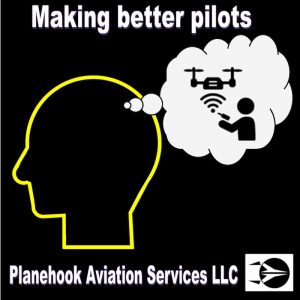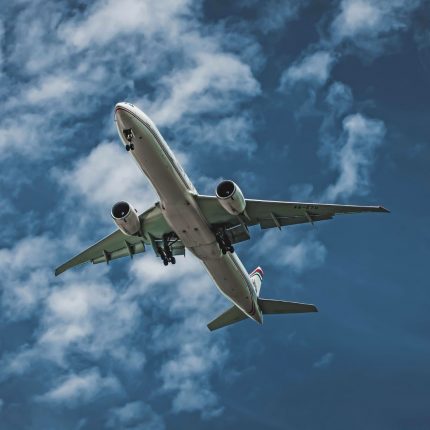Post Sponsored by Planehook Aviation Services
Are you looking for a way to add STEM (Science, Technology, Engineering, and Mathematics) to homeschool education? Do an aviation ground school.
Consider what it takes for a pilot to plan, launch, and recover an aircraft…and do it safely.
- Technical Knowledge. Aviation ground schools cover essential technical knowledge related to aerodynamics, navigation, weather, regulations, and aircraft systems. Students learn about the principles of flight, aviation safety, and the science behind aircraft operations.
- Mathematics and Science. To fly safely, pilots must understand weight and balance computations, fuel calculations, and aircraft performance data – all of which involve science and applying mathematical concepts. Pilots and aeronautical engineers use physics principles like lift, weight, drag, and thrust and learn to balance them to make an aircraft fly.
- Problem-Solving Skills. There is no such thing as a typical flight. Something or someone always makes one flight different from the next. Pilots must analyze situations, troubleshoot issues, and make decisions during flight. That is why aviation ground school fosters critical thinking and problem-solving abilities.
- Hands-On Experience. Ground school is not meant to stay on the ground. It is meant to aid pilots when they fly. So, while ground school primarily focuses on theory, it is really preparing learning pilots for flight. Real-world applications are what STEM is all about.
- Safety and Regulations. Let’s take a step back and consider the word safety. Flying, driving, boating, and even walking are not completely safe. What we do is consider the risks, lower those risks where we can, and then decide if the benefit of the activity justifies the risks we are about to take. So, safety is really controlling and reducing risk—risk mitigation. Aviators learn about regulations because those pesky regulations provide boundaries for an activity that is filled with risks for the benefit of both the aviator and the non-flying person on the ground. So, learning about flying regulations, airspace, air traffic control procedures, and emergency protocols emphasizes risk analysis and control (a.k.a. safety), compliance, and decision-making.
- Integration of Technology. Anything involving aviation relies on technology—aircraft guidance, navigation, control, communications, propulsion, power systems, and system displays.
- Career Opportunities. Let’s cut to the chase. The world of aviation is starving for pilots, engineers, mechanics, and airport, heliport, and vertiport management. Ground school lays the foundation for success in these professions.
Let’s dig a bit deeper into the opportunities for pilots. If a learner in your household wants to become a pilot, the projected annual shortage is approximately 8,000 pilots. That’s according to multiple aviation industry sources. But the needs and opportunities are even greater in the world of airliner manufacturers.
Aircraft manufacturer Airbus estimates that between now and 2041, the aviation industry will require 585,000 new pilots. Boeing, on the other hand, projects an even greater need for 649,000 new pilots. Regardless of whose numbers you think are more correct, it all comes down to this one simple fact: every pilot starts with ground school.
Becoming a Pilot
It used to be that for someone to become a pilot, they started by obtaining their Private Pilot License. But the reality is that taking ground school, flight training, purchasing equipment, and insurance drains most budgets—between $10,000 and $20,000. What’s more, a Private Pilot can’t make any money with that license. But what if you take a slightly different and more sustainable path to getting onto the flight deck of an airliner, business jet, or helicopter?
Remote pilots earn money—good money! Applicants take a multiple-choice test to get a remote pilot license from the U.S. Federal Aviation Administration. The test currently costs just under $200 to take, consists of 60 questions, and requires a minimum score of 70% to pass. With that license, a remote pilot can earn money by flying unmanned aircraft systems—drones.
The remote pilot license is a fantastic way to get into aviation and make money doing it. Passing the test—the Remote Pilot General Airman’s Knowledge Test—is not a given. Mistakes that cost $200 add up quickly. Learning pilots will want a ground school that is a proven performer.
During the Pandemic, Planehook Aviation Services volunteered to teach a semester-long, Remote Pilot Ground School to high school students. As you might expect, some learners paid attention, and others did not. However, we observed what methods of instruction were helpful for secondary school students and what methods were intended to reach much older learners. We learned our lessons and applied them to our ground school, just as our successful young aviators learned theirs and earned their Remote Pilot Licenses.
Take Off Learning!
Planehook’s Gen2 Remote Pilot Ground School has 40 lessons which include readings, videos, activity sheets, lesson quizzes, unit quizzes, and a final exam. All test questions use the same format as the FAA’s test. By the time our learning pilots complete the course, they are ready to take that 60-question FAA test. And you’ll find that Planehook’s course is easy on the wallet, too. Go to this website and use the discount code HOMESCHOOL20 to receive a 20% discount off of the regular low price (good until July 31, 2024).
When it comes to aviation instruction, this isn’t our first rodeo. We know that not every instructor is a good fit for every learning pilot. That’s why Planehook gives a free course so that you can see if our lessons and your learners are a good fit. This FREE course will help your prospective flyer to get their recreational RC airplane/UAS license as well as enhance their understanding of the responsibilities of a pilot. So, whether you choose Planehook’s ground school or not, your learner can still walk away with their recreational drone license. And if that inspires your young aviator to get their commercial drone license—the Remote Pilot License, then they’ll be starting down the path of becoming a professional pilot.
To learn more about Planehook Aviation Services, we invite you to visit our website.
Fly safe!
Latest Posts

As homeschooling continues to grow in popularity, more parents are taking on the challenge of providing a comprehensive education that not only meets academic standards but also prepares their…
Read more >
June has come and gone, and summer is in full swing! Whether you're traveling this summer or staying close to home, we hope you're enjoying this time with your family. We wanted this month's…
Read more >
Summer is an all-around favorite season for most people. In the U.S., it’s even more exciting for many of us since we get to celebrate Independence Day! The Fourth of July is a wonderful…
Read more >


